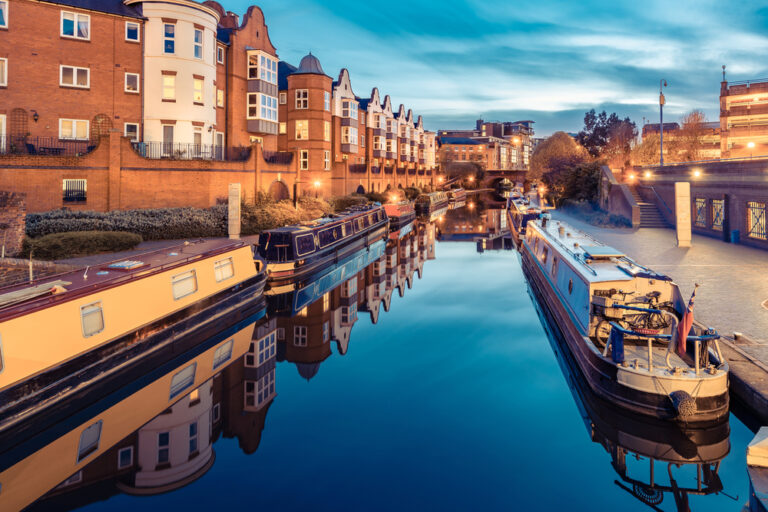Birmingham, the UK’s second largest city with a population exceeding 1.1 million, sits in the heart of the UK, positioned as the mid way point between the industrial north and London.
The city’s commercial history has ensured its position as an international venue for industry, attracting visitors keen to invest in local talent, source new products and network with like minded entrepreneurs.
Over the years, Birmingham’s growth and development has reflected its industrial past, and this has in turn fed into how we perceive the metropolis in the 21st century. We’ve highlighted here important influences on the city’s growth, and how that past is woven into the very fabric of the city as a whole.
The very heart of the Industrial Revolution
This small marketing town became a manufacturing powerhouse during the Industrial Revolution. In 1791 it was awarded the endorsement of ‘The first manufacturing town in the world’ – no surprise considering it was located right by the Black Country, the very heart of the Industrial Revolution. It was also known as the ‘City of a Thousand Trades’, being a hub for metal working, iron and steel production.

Part of this development included the canal network. Birmingham was a key part of the canal links which connected northern ports such as Liverpool, with the London docks. Every day raw materials and finished goods were transported through these waterways, spawning their own businesses along the banks.
Today, that canal network is very much an integral part of the city and its point of attraction to outside visitors. Birmingham actually has more miles of canal than Venice, and their restoration over the lost decades was down to the commitment of thousands of volunteers. Today they form the focus of cafes and restaurants, city walks and retail experiences, tourist attractions and historical intrigues.
Two centuries of jewelry expertise
Anyone who knows Birmingham knows about its intimate history with the jewelry business. Indeed, its Jewelry Quarter is probably one of the most famous areas, where, for about two centuries everything from cufflinks and necklaces, to medals and coins were designed and manufactured. The area suffered a sharp decline in output in the first quarter of the 20th century, impacted by global events such as the First and Second Wars, and the Great Depression in the States.
However, the area has never lost its strong links with the global jewelry industry, and today still houses 700 different jewelers, from internationally renown brands to small unique independents.
The legacy of this 0.4 square mile area also includes some beautiful buildings, which are themselves iconic symbols of Birmingham’s industrial past and have undergone extensive regeneration into modern business hubs, apartments, as well as thriving bars, restaurants and nightclubs. Those that live and work within this area protect it with a feverish affection that will ensure it survives for many centuries to come.
A pioneer in the automotive industry
With a history deeply rooted in manufacturing, it is no surprise that the UK’s automotive history has deep roots in the Birmingham area. The Longbridge plant was originally built in 1895, and become affiliated with the Austin Motor Company in 1906. For more than a century Longbridge was the heart of car manufacturing, at one point employing over 25,000 workers to build British icons such as the mini.
Early on, many of those workers livid in the nearby purpose built Austin village, where dedicated cedar wood pre-fabricated bungalows we constructed, fitted with coke fired heating, gas cookers, gas water heater, and an internal bathroom with a bath. The village remains to this day, and many of those original bungalows have been historically preserved ut updated for modern life.
Also, Read The Following: custom lanyards.


